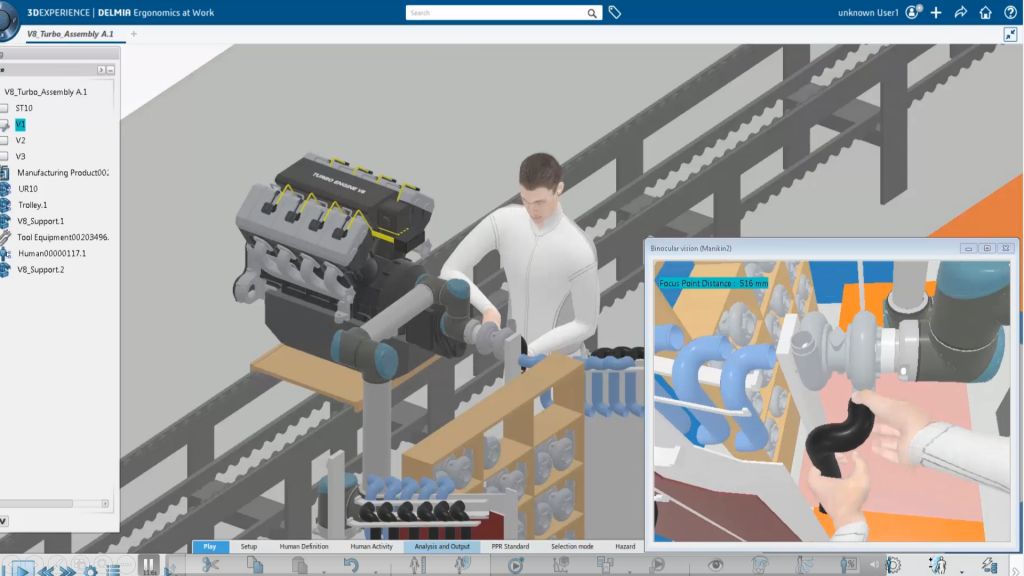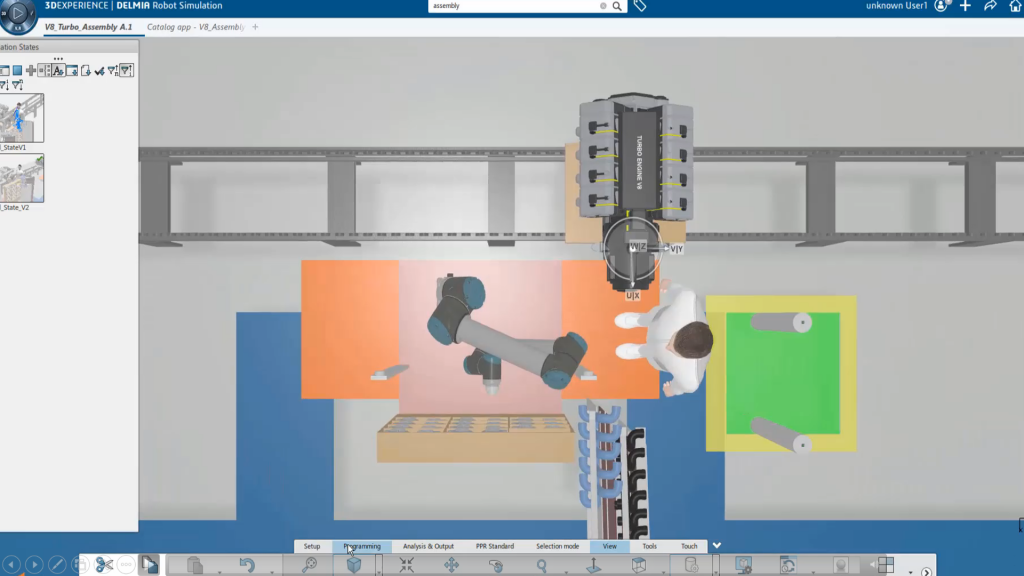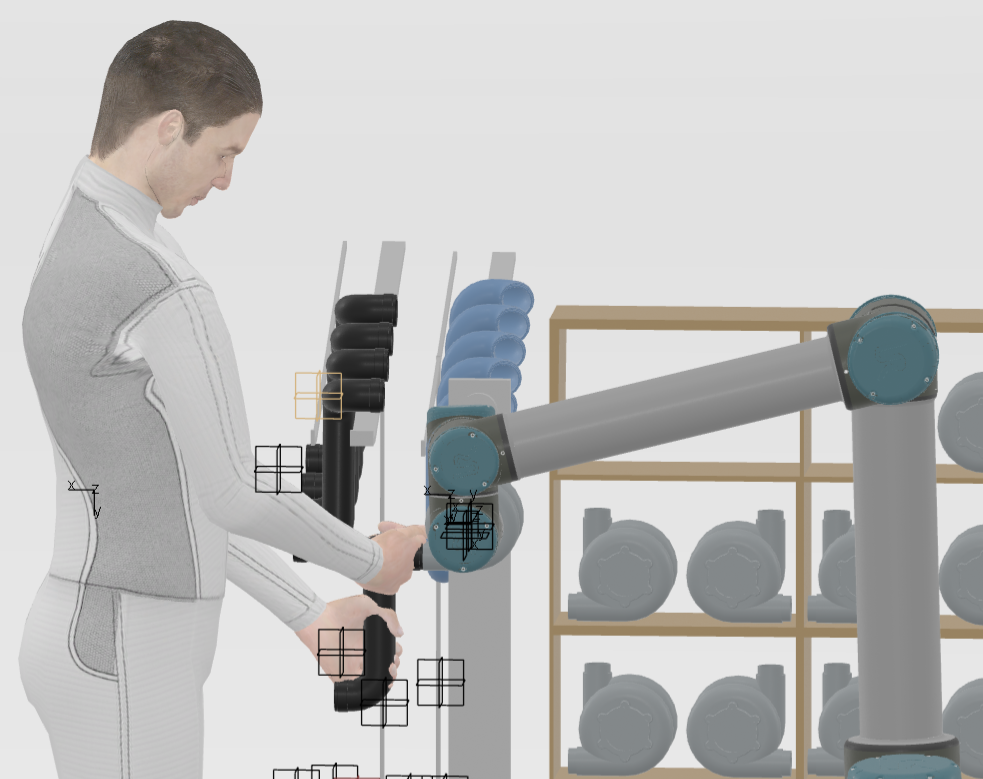What are Cobots and why are they such a big deal?

Cobots are changing the way people work in factories by allowing for much more interaction between robots and humans. In addition, they offer multiple levels of collaborative operation. While traditional workcells separate robots from workers entirely, cobots are built to share the workplace, working next to humans.
Simulating Cobots for Workcell Design
One of the most helpful aspects of using simulation for workcell design is simulation. It enables users to examine what the operator can see. Clear line-of-sight allows the operator to work more efficiently. A good workcell design and robot program assures good visibility and reachability. Each can be verified using the simulation.
Robot and Tool Layout
When placed in the workcell, the robot needs to reach all of its locations that enable it to perform the given tasks, such as is pick up, drop off, assembly position, service, etc. Simulation allows the user to place the robot in a position where all of these locations are reachable, and at the same time maintain smooth robot motion, minimize cycle time and reduce the risk of injury to the operator.

Cobots and Human Safety
Placement of the safety devices such as light screens, safety mats, as well as the Human-Machine Interface (HMI) affects throughput as well as human safety and comfort. The simulation allows for safety devices and their placement to be considered up-front in the engineering process, instead of an afterthought. It also allows for close examination of the human – robot interaction. Each phase of the process can be examined to assess any potential dangers presented in the collaborative system.
Cobot Programming and Workcell Design Affects Worker Safety
When designing a workcell for a human, the entire layout and positioning of the components are designed around the human to maximize throughput and safety. The workcell should also be configurable to accommodate workers of different sizes. The simulation lets us program the robot to present the part to the operator. It also allows for the validation of each posture the operator uses. The simulation also allows us to examine each task performed by workers of different statures. Here we see that a lower part presentation is more comfortable for the operator and is safer according to the RULA assessment.
Learn more abut DELMIA Robotics in our DELMIA Robotics Community.
Discover DELMIA’s Robtics Software Value page


